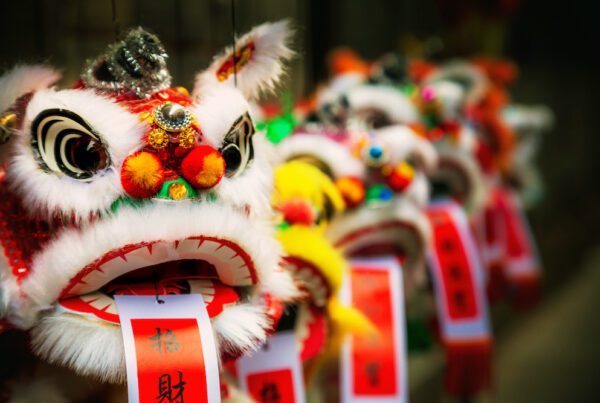
China is hailed as the market to get into, but finding out where the wine is selling is another matter.
All of the wine trade journals are full of news from China. The same probably holds true in every country exporting into the world’s fastest growing major wine market. Certainly Australia’s performance based on export statistics is exemplary; and more wine producers are taking the leap to export there. At the same time Chinese companies see the relative bargain prices to obtain grapes and wine directly from Australia by buying assets in our country. This has not gone over well with many folks.
I remember the outcry when the same type of international buyers began targeting land and wineries in California during the 1980s. The US wine market was growing and land in key regions in France and Italy was so expensive. Land and even wine companies in Napa, Sonoma and other parts of California looked positively cheap. Since then, foreign and multinational companies bought and now own a number of top American wine brands, yet these brands are still viewed as American. Many of these brands are exporting outside the US. It is not very different to Australia today.
Today, what happens in China affects the global wine sector in some way or another. I was lucky to be an invited guest to the Tenth Symposium on Viticulture and Oenology, held in the Ningxia wine region, which is considered by many to be the most important premium wine region in China. This was my third visit. A number of other Australians have visited and even made wine in this dry northern province up against the Helan Mountains bordering Mongolia. What did I learn?
China is investing heavily in grape and wine science. I visited Northwest China Agricultural University, which organised the conference, at their main campus outside Xi’an. The government has just built a new five-storey grape and wine science building and will turn the old building into a wine museum. At the conference, a number of viticulture and oenology scientists spoke on a wide range of technical issues. Also impressive was the number of Chinese scientists speaking at the conference, who are on the faculty at a number of good universities around the world.
On the other hand, I was not impressed with quality of the wine marketing and wine business academics from Chinese universities. These staff are teaching a number of university courses and even degrees in wine marketing and wine business, but produce very little research even about their own market.
The most informative presentations on the Chinese wine market were from analysts from outside China, and at this conference they were all Australian: Prof. Kym Anderson from Adelaide University, Rob Geddes MW and myself. Kym spoke about the future make-up of the Chinese wine market based on his global model of grape and wine markets.
China, as I predicted five years ago, is likely to look a lot like the US or Australia with about 75 percent of its wine produced domestically and 25 percent imported. Rob compared the Australian show system with the Chinese wine show system, comparing the independence and market-leading role of the Australian show system with the much more politically driven and predetermined current Chinese system. I found it enlightening to speak to a number of Chinese delegates who did not see an issue with their system. I spoke about how to grow premium wine brands in China and summarised some of our recent research about imported wine drinkers in China.
We had a formal tasting of wines from Qingtongxia and Hangsibu, two sub-areas of the Ningxia region, as one evening’s activity. It is important to understand that the Chinese infatuation with Bordeaux has led to planting cabernet sauvignon across all Chinese wine regions. There are now producers turning to other more suitable grape varieties depending on the region. But in Ningxia, as in most regions, cabernet is by far the most widely planted grape. This region has only 150 to 160 growing days due to its northern continental climate. It is sunny and warm during the day and cool at night, but in many years it is difficult to get cabernet completely ripe. The two best wines I tasted were made from chardonnay (with a little too much oak) and from a Chinese-named grape variety, cabernet gernischt, now proven to be genetically identical to carménère. It seems to ripen more completely in these regions, as does cabernet franc.
The private conversations behind the scenes were very illuminating. Even with the growing fame of Ningxia, it seems that many of the wineries are having a difficult time selling their wines. A few of the best-known producers, which have received good scores from international wine critics, are able to sell their wines but a number of wineries have priced their wines to try to appear as super-premium – eg, $100 to $300 AUD – and are not selling. I don’t consider the majority of the wines to be of that calibre. Most of the large Chinese wine companies have brands or sub-brands priced more realistically from the Ningxia region, but it is hard to know how much they sell.
Jim Boyce, wine writer, Chinese industry pundit and author of the Grape Wall of China monthly newsletter wrote in his last edition that he estimates perhaps half of China’s domestic wine sales are contrived through cross-selling internally and that the wines after sale are languishing in warehouses, not sitting in restaurants or people’s homes. His estimate is that China’s wine market is actually about 50/50 domestic and imported, rather than the official 75/25.
The potential of a growing stock of unsold Chinese wine will have major ramifications on the future growth and sales for wine in China.
This assertion is part of the basis of a project we at Ehrenberg-Bass are conducting as part of a Wine Australia grant. It is sometimes difficult to know which wines are actually for sale in China, where they are sold and what the retail price is once they have been shipped from Australia. We are conducting retail store audits in major cities as well as online audits of Australian wines and some key competitors. We should be able to make some observations on the percentage of different countries’ wine for sale in different retail channels later this year.
China is certainly an expanding market. It may be that imports are a much more important part of the wine market than previously thought. We know that Australia is number two in exports and that more than 400 Australian wine companies are exporting there. We don’t know how much of that wine is being purchased on a regular basis or where this is occurring. These are important questions for all of us to consider.
This article first appeared in the July-August edition of WBM – Australia’s Wine Business Magazine.









Recent Comments